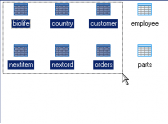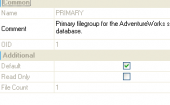MS SQL Maestro online Help
| Prev | Return to chapter overview | Next |
Create Role Wizard
Create Role Wizard guides you through the process of creating a new database role. See How To Create role to learn how to run this wizard.
The basic principles of Create Object Wizards in MS SQL Maestro are explained in a separate topic. Below you will find a description of wizard steps that are unique for the current object.
Specify role options according to your needs. The detailed description is given below.
Name
The field contains new role name as it was set on the previous step.
Owner
The database user or role that is to own the new role. By default, only the owner of an object can perform various operations with the object. In order to allow other users to operate it, privileges must be granted. (However, users that have the superuser attribute can always access any object.)
Role Type
Defines the role type. Role can be Standard or Application. Unlike standard roles, Application Roles allow the application, rather than SQL Server, to take over the responsibility of user authentication. However, because SQL Server still must authenticate the application when it accesses databases, the application must provide a password because there is no other way to authenticate an application.
Password
For Application roles only. Specifies the password that database users will use to activate the application role.
Default Schema
For Application roles only. Specifies the first schema that will be searched by the server when it resolves the names of objects for this role.
Managing role members
The wizard step allows to define users and roles to be the new role members, to add the role being created to another database roles, and to grant new role permissions. Just open the corresponding tab and check the appropriate boxes.
| Prev | Return to chapter overview | Next |





 Download
Download Buy
Buy
